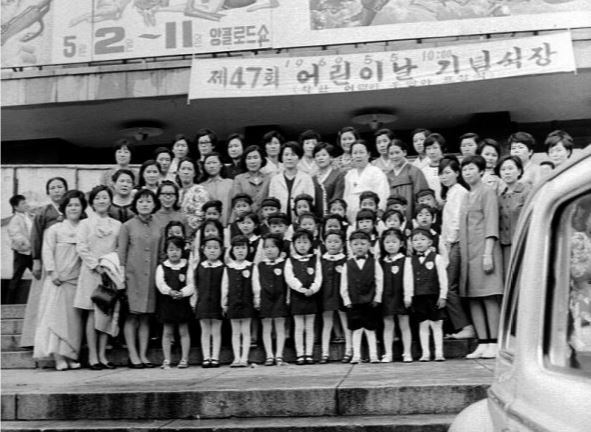[News Focus] South Korea’s population falls for 5th consecutive month
Cumulative decline since December approaching 10,000
By Kim Yon-sePublished : May 3, 2020 - 11:32

SEJONG -- South Korea’s population has been falling since late 2019, despite an increase in foreign residents here.
The nation’s population, which reflects not only the number of births and deaths but also the number of foreign residents here and changes in Korean citizenships, posted 51.842 million as of April. down 671 (minus 1,234 for men and plus 563 for women) from a month earlier, according to the Ministry of Interior and Safety.
This marked the decline for the fifth consecutive month, though the pace slowed last month.
Korea’s population fell by 8,903 over the past five months, and there is a high possibility that the figure will top 10,000 in the coming months as long as there is no marked bounce-back.
Previously, the population has only fallen on a monthly basis twice -- in March 2008 and in April 2009. For a decade from May 2009 to November 2019, the figure showed a continuous on-month increase.
In April, the deaths outnumbered births -- 23,878 vs. 23,032. While the disparity between the two was 846, the change in the number of foreign residents here somewhat offset the drop for a total population decline of 671. In addition, citizenship changes -- Koreans renouncing their citizenship -- could also affect the demographic changes.

Out of the nation’s 17 major areas (eight cities and nine provinces), 13 including Seoul posted a fall on-month. Only four -- Sejong City, Gwangju City, Gyeonggi Province and Jeju Province -- reported population growth.
Seoul took the initiative in the slide as the number of its residents decreased by 6,868 (minus 4,374 for men and minus 2,494 for women) in April. The number of citizens in the capital stood at 9.72 million.
North Gyeongsang Province posted minus 2,364 (ranked 2nd), followed by South Jeolla Province with minus 2,207, Daegu with minus 2,045, South Gyeongsang Province with minus 1,961, Incheon with minus 1,717 and Busan with 1,585.
Among the other major cities, Ulsan’s population fell by 465 and Daejeon’s fell 208.
In contrast, Gyeonggi Province marked a month-on-month increase of 22,279 in residents to reach a record high of 13.31 million. The province now accounts for 25.6 percent of the population.
The number of residents in Sejong climbed 424 to 345,216, which is a surge of 93.2 percent compared to five years earlier, when it stood at 178,656. Jeju Province edged up 64 on-month to 670,595.
The male population in South Korea declined for the ninth consecutive month, falling a cumulative 11,129 during the August 2019-April 2020 period.
The female population rose again in March and April after posting a negative growth for the two consecutive months -- minus 399 in January and minus 510 in February.
During the December 2019-April 2020 period, the number of male residents dropped by 9,095 and the female residents inched up 192 for a minus 8,903 in total.
Women outnumbered men by 127,506 as of last month. The number of men per 100 women, posted an all-time low of 99.5, down 0.1 percentage point from a year earlier. The nation’s male and female populations came to 25.85 million and 25.98 million, respectively.
Women began to outnumber men in June 2015 for the first time on record. At that time, there were 25.7153 million male Koreans to 25.7157 million female Koreans.
The ratio has further declined by about 0.1 percentage point per year over the past few years -- to 99.8 in January 2017, 99.7 in January 2018 and 99.6 in January 2019, the Interior Ministry data showed.
By Kim Yon-se (kys@heraldcorp.com)







![[Graphic News] More Koreans say they plan long-distance trips this year](http://res.heraldm.com/phpwas/restmb_idxmake.php?idx=644&simg=/content/image/2024/04/17/20240417050828_0.gif&u=)
![[KH Explains] Hyundai's full hybrid edge to pay off amid slow transition to pure EVs](http://res.heraldm.com/phpwas/restmb_idxmake.php?idx=644&simg=/content/image/2024/04/18/20240418050645_0.jpg&u=20240419100350)





![[From the Scene] Monks, Buddhists hail return of remains of Buddhas](http://res.heraldm.com/phpwas/restmb_idxmake.php?idx=652&simg=/content/image/2024/04/19/20240419050617_0.jpg&u=20240419175937)

![[KH Explains] Hyundai's full hybrid edge to pay off amid slow transition to pure EVs](http://res.heraldm.com/phpwas/restmb_idxmake.php?idx=652&simg=/content/image/2024/04/18/20240418050645_0.jpg&u=20240419100350)

![[Today’s K-pop] Illit drops debut single remix](http://res.heraldm.com/phpwas/restmb_idxmake.php?idx=642&simg=/content/image/2024/04/19/20240419050612_0.jpg&u=)